Issue 7 Flipbook

Read issue 7 as a flipbook

Read issue 7 as a flipbook
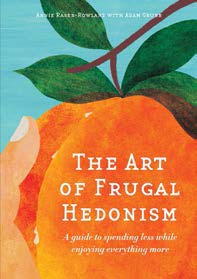
In the current climate, where lots of folks want to downsize, downshift, simplify radically, barter + trade, go no-waste, grow good food, and reconsider where working for years from nine to five in an office actually gets them in terms of health and happiness, this book is both an antidote and an inspiration of sorts.
The Art of Frugal Hedonism is about living – very – lightly on this planet, while having a rocking good time. Both Annie and Adam have been doing urban frugalism, rather radically, for many years now, and it does certainly seem like they are having a good time.
But the book is not just talking about the fact that we all need more time, and less clothes (though that’s part of it) to live a good and happy life. It’s also packed with quirky but solid advice for ways to re-use, barter, DIY, dumpster dive, swap and generally cut down on all the everyday consumption you can think of. For the sake of limiting consumption on this one-andonly planet of ours, and also for the sake of living well, with a stronger community, and saving the money you do have for things that actually matter.

Bill Mollison – the ‘father of permaculture’ – died on 24 September 2016. To imagine and then create a worldwide movement of remarkable resilience is an incredible feat. Permaculture books are printed in many languages, it’s taught and practised in almost every country of the world, and found on websites in at least 110 languages.
Bill didn’t do this alone – his mix of Aussie-gruffness, love for storytelling and massive charisma was just what was needed to create a vision, a design system, and a network of teachers and practitioners who have spread the concept globally.
Bill had a brilliant mind. He observed, he catalogued and used a systems approach to help weave seemingly disparate ideas into the most detailed tapestry. In this sense he was a true visionary. He was also challenging, angry and driven by a deep sense of injustice. He used to say, ‘First feel fear, then get angry, then go with your life into the fight’.
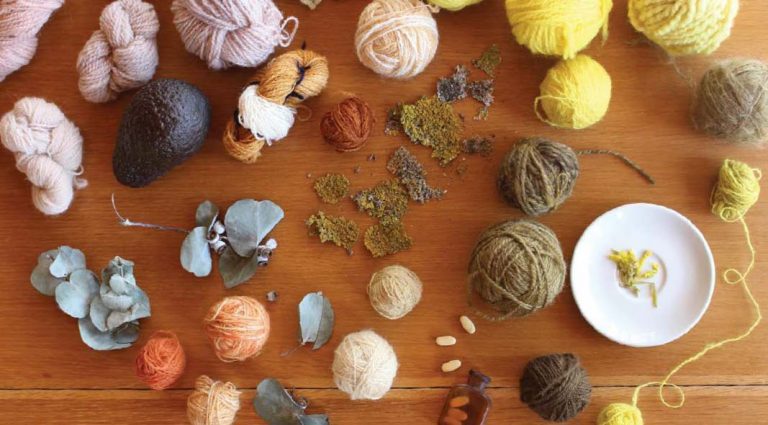
There’s dye in everything, really’, says artist Deborah Brearley, as she unpacks oxalis, lichens, rusty nails and an array of other gathered materials onto the kitchen bench: all ingredients for the natural dye pot. Deb has been dyeing textiles using natural pigments for more than three decades, and in the world of natural dyeing that makes her a bit of a master.
‘This is like a journal’, she says as she produces a loop of twisted-wool dyed samples, with handwritten tags such as Lichen (Paradise Falls, Apollo Bay), winter 1979 and Orange fungus (Perrys’, Bacchus Marsh), winter 1981. The journey of her life is noted on these tags, a record of her art and travels, tracking the seasons and places she has been. As well as dyeing her own fibres, Deb spins her own yarn and knits it into garments and artworks. Her art practice is multidisciplinary – including painting, quilting and photography; she’s committed to understanding and valuing materials and processes, from ground pigment to finished artwork.
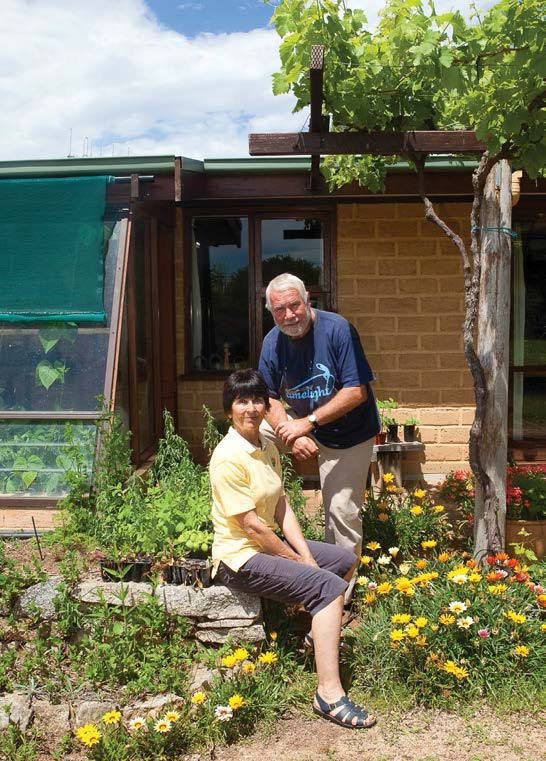
After leaving their homeland in France, Claude and Helene Marmoux travelled to Australia where they settled in Sydney. After buying a house there, and running their own business for many years, they left to travel the country where they discovered permaculture through Robyn Francis. ‘Studying the PDC with Robyn Francis in the nineties was exactly what we were looking for, and gave us a new direction in life’, Claude remembers. They knew that a new life, where they provided for themselves, was the best step they could take towards saving the earth: ‘As humans living on a planet with finite resources, our first step is to reduce our impact, which begins with building smaller houses’.
Their search for a new home in the country led them to their current property, sitting atop a ridge in Brogo on the Far South Coast of NSW. Sauveterre Permaculture is their home and design project. Sauveterre – or ‘Save Earth’ – has been their ongoing inspiration in building this small working farm. The overall result is a small parcel of land being managed well to provide for the needs of the couple.
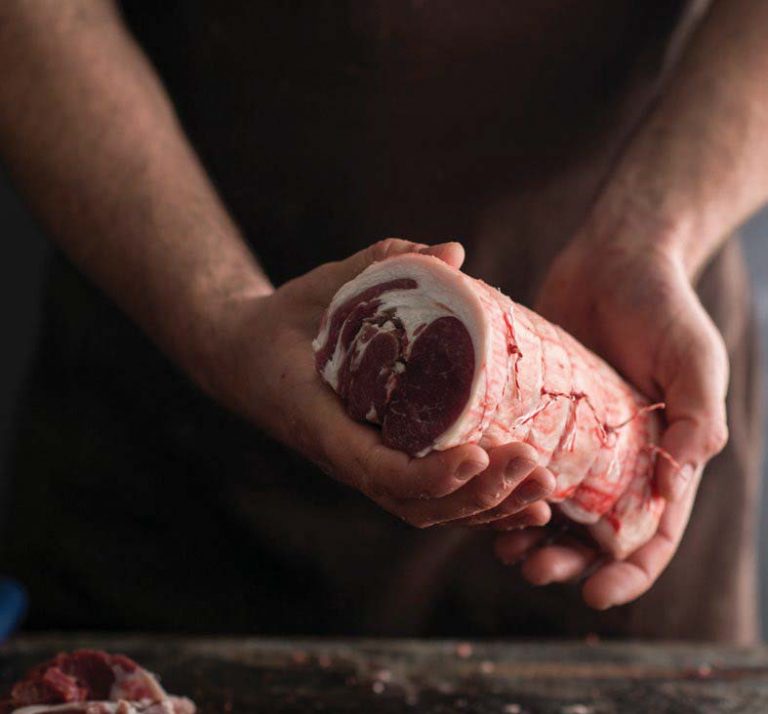
Laura Dalrymple and Grant Hilliard run Feather and Bone, a small Sydney butcher selling pasture-raised livestock sourced directly from sustainably run, mostly local farms. Laura shares her story.
Grant started the business in 2006, in a fit of blind enthusiasm about rare-breed sheep. He’d worked with unemployed youth, as a waiter and sommelier, and studied filmmaking – not exactly the background you need to become a butcher. He didn’t set out to be a butcher, but merely followed his fascination with terroir and food.
We believe there’s a fundamental link between the way an animal is raised and how it tastes on your plate. Our business is built around the desire to ‘open up the line of sight’ between farm and consumer, so that decisions are informed and considered.
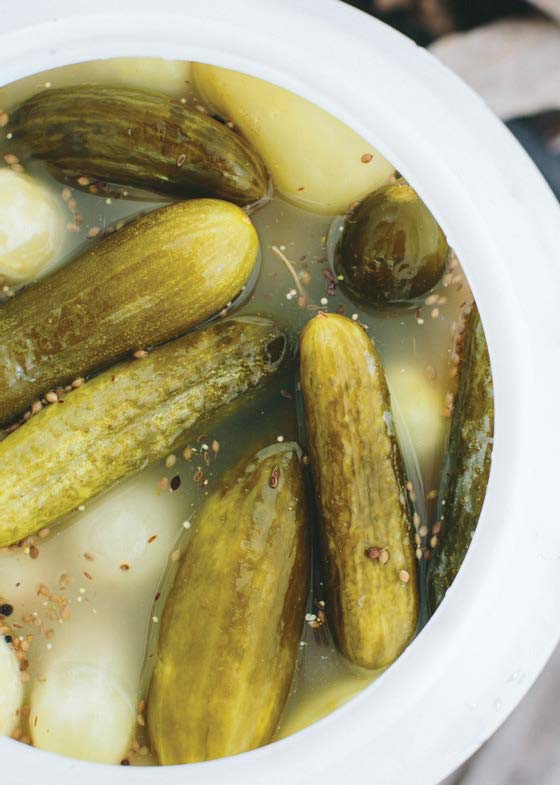
People have been preserving food forever. Before the invention of fridges, knowing how to preserve your harvest by salting and drying meats or fermenting vegetables was an absolute necessity. These days the need for preserving may seem to have disappeared, but we feel it’s as important as ever. We still see preserving your harvest as a fundamental part of living a full life. It’s in our blood: there is a deep satisfaction in preparing a larder so that you can enjoy foods that are out of season all year round.
There is no better time to learn to preserve than when summer is in full swing. Everything is ‘in’ and no other time of the year feels quite so abundant. Sometimes the late summer harvest can be so abundant that it’s quite overwhelming! Having a few preservation tricks up your sleeve will mean you are ready for anything. And winter will feel that little bit sunnier when you can pull out the summer treats you stored away.
There are loads of ways to preserve, but let’s focus on one of the most ancient: lacto-fermentation, an ancient technique that has kept humans healthy and fed for thousands of years. It preserves by helping the good bacteria (lactobacilli) overpower the bad.
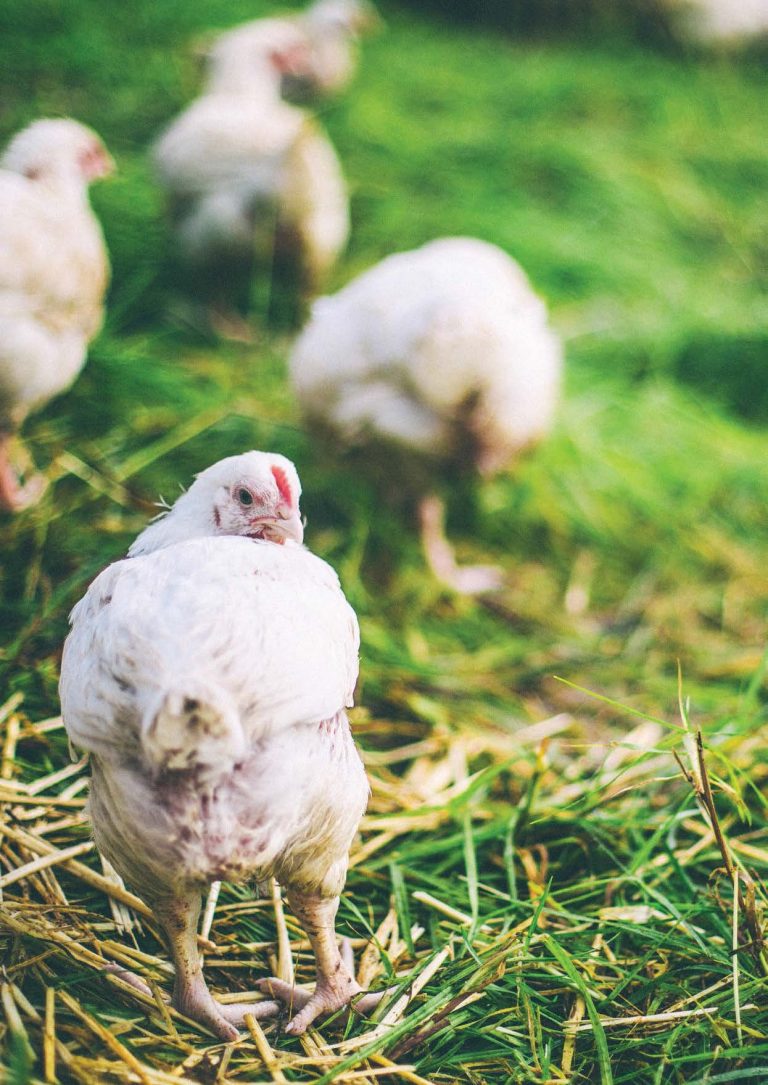
Australians eat a staggering number of chickens each year. An extreme minority are raised on pasture, with the vast majority confined in sheds. Even if you’re buying ‘free range’ or even organic chicken from a supermarket, chances are you’d be appalled at the conditions in which these chickens live and die.
So, what is an ethical solution for those who want a little bit of chicken meat in our diet? First of all, remember those wise words of Michael Pollan: ‘eat food, not too much, mostly plants’. You don’t need to eat meat every day. Think of quality, ethically- grown meat as a treat: buying ethically raised meat is going to cost you more. Either source your chicken directly from a small-scale farmer, who is raising the birds on pasture (best for the farmer), or through an ethically-driven meat provedore such as Feather and Bone, who can tell you about the farms and farmers they source their meat from. (See article page 56)
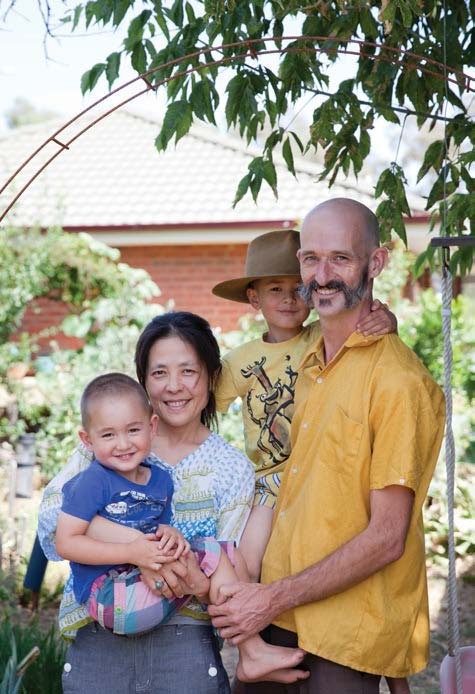
The Abdallah House project began in May 2008 in suburban Seymour, central Victoria, with the purchase of a three-roomed bungalow, with bathroom/ laundry tacked onto the side, on a 584 m2 block. The project is driven by permaculture practitioner Richard Telford with support from his partner Kunie, and children Kai and Sen.
In mid-2005 I decided on a tree change, and moved to Common ground Co operative, a small intentional social change community in Seymour. While I liked the idea of building a place at the community, there were downsides, for example if we wanted to leave our home in future, we couldn’t reinvest that energy into a new home.
In May 2008, in the midst of the global financial crisis, I attended the auction of a deceased estate, curious to find out how much ’the worst house in Seymour’ would sell for. The place was passed in with no bids. As I was about the leave the property I thought to myself, ‘Why not just offer them what I have in savings?’. I made an offer and, after negotiation, agreed on a purchase price of $53 000. We now owned a place of our own: a derelict shack on a small piece of river flat.
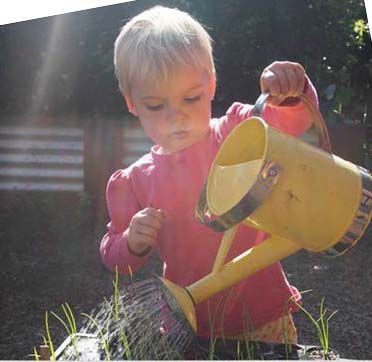
The winner this issue is Pearl Turnbull aged 4 from Bendigo. Congratulations Pearl you receive an original illustration by Trace Bella and a copy of her book Rockhopping (Allen and Unwin 2016)
Parents send in photos of your kids in the garden or with their homegrown produce to win a set of Little Permies activity cards. To enter send name, age and address of child to maude@pipmagazine.com.au.